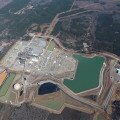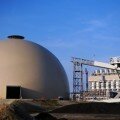President Barack Obama recently unveiled his revised Clean Power Plan to cut US power station emission by nearly a third in within 15 years, calling it “the biggest, most important step we have ever taken” to tackle climate change.
“I’m convinced no challenge provides a greater threat to the future of the planet,” Obama said. “There is such a thing as being too late.”
The final version of the Plan is a long-awaited rule and should blaze further trails for deployment of Carbon Capture and Storage (CCS) in North America.
The new power plant emissions measure, developed by the Environmental Protection Agency (EPA), calls for a 32% cut in carbon dioxide emissions by 2030.
Obama is putting the plan in place by executive order, bypassing the Republican-controlled Congress, where the measures have been described as “government overreach” and “heavy-handed.”
Each US state will have an emission-cutting goal assigned to it, and must submit a proposal to the EPA on how it will meet its target. This is meant to encourage investments by state capitols and utilities nationwide in solar, wind and other renewable power sources, diverting spending from dirtier power sources, including coal and fuel oil. In turn, many states have said they’ll sue the government.
Jonas Helseth, Bellona Europa, argued that the earlier version of the Clean Power Plan presented fertile ground for CCS expansion in the US. At present, the most promising developments have come in North America with Canada’s first-ever industrial level CCS plant at Saskatchewan Boundary Dam coal-fired power plant. Another similar technology, called integrated gasification combined cycle is slated to go online at Southern Company’s Kemper power facility in Kemper County, Mississippi in 2016. Southern Company intends to capture 65% of the plants CO2 emission and sell them for enhanced oil recovery. In addition, Plant Barry in Mobile, Alabama, represents the only project in the world that provides capture, transport and permanent storage of CCS. Plant Barry stores 150 000 tons of captured CO2 annually, and has done so successfully since 2012. The project remains small scale, but it provides experience and technological developments that benefit the entire CCS value chain.
Bellona CCS advisor Sirin Egen toured the Kemper Project in June. The visit was facilitated by the US’s only CO2 capture technology center, the National Carbon Capture Center in Alabama. Egen said her two weeks in the US South “confirmed that the North American CCS train has left the station, while Europe is still trying to buy a ticket.”
The Boundary Dam and Kemper project are odd bedfellows to their respective regions. “Canada is often seen by activists the home of the world’s climate deniers, and now they are the first country in the world to deliver on the technology that can deal with the constantly increasing used of coal,” Helseth said when attending Boundary Dam’s opening. Similarly, Southern states’ overwhelmingly Republican representation in Congress comprises some of the most outspoken voices against anthropogenic climate change in US politics.
The Clean Power Plan aims to boost the US’s status at UN climate talks (COP21) in Paris later this year. It also throws down a gauntlet to other countries to present their own plans prior to the critical Paris meeting. The EU’s commissioner for climate action and energy, Miguel Arias Canete, said via Twitter that Obama’s plan provided “further momentum to COP21″ and showed the “US commitment to underpin its international climate pledge with domestic action.”
See bellona.org for the original story.





 #Kemper is capable of producing much cleaner energy from coal, that’s why energy leaders are watching so closely.
#Kemper is capable of producing much cleaner energy from coal, that’s why energy leaders are watching so closely.